African Food Dishes: Basic Overview
Common Ingredients
Common Cooking Methods
Courses
Meals
Key Taste
Eating Etiquette
Meal Presentation
Culinary Festivals
Influence and Fusion
Popular Types of African Dishes
-
Rice dishes
These dishes often incorporate a rich array of spices, vegetables, and sometimes meats. The preparation styles can range from simple and straightforward to complex.
In many African cultures, rice dishes are not just everyday meals but also form an essential part of celebrations and communal gatherings.
-
Porridge
Porridge in African cuisine is made from a variety of grains such as maize, millet, sorghum, or rice.
It can be served in both sweet and savory versions, often enriched with ingredients like milk, sugar, honey, or butter for a rich flavor.
Savory versions include vegetables, meat, or fish, making them a nutritious and fulfilling meal.
-
Grilled and barbecued dishes
These dishes often feature a variety of meats, including beef, chicken, lamb, and fish, marinated in a blend of spices that infuse them with bold, smoky flavors.
The grilling process not only imparts a distinctive charred taste but also celebrates communal cooking practices, with barbecues being a focal point for social gatherings.
-
Stews
African stews can include a variety of ingredients such as meats, vegetables, and legumes, simmered in a thick sauce that’s seasoned with a unique blend of spices and herbs.
These stews are typically accompanied by staple foods like rice, fufu, or injera, which help to soak up the delicious sauces.
-
Soups
Soups in African cuisine can be made with a variety of bases, including vegetables, meats, fish, and legumes, and are usually enriched with spices and herbs.
African soups are not only appreciated for their taste but also for their nutritional value, often served as a starter to a meal or as a main dish in their own right.
African dishes are delicacies commonly savored across Africa, the world’s second-largest continent. African cuisine utilizes a wide array of locally sourced ingredients, including fruits, vegetables, cereal grains, and meats.
Common staples include cassava, yams, maize, rice, and plantains, often paired with leafy vegetables and spices such as peanuts, chili peppers, and ginger. Meat, including beef, chicken, and occasionally game, plays a significant role in many diets.
The cooking methods vary widely but generally include boiling, grilling, stewing, and roasting. A distinctive feature of African cuisine is the preparation of starchy sides like fufu, made from cassava or plantains, and served with meat or vegetable stews.
The flavors range from spicy and savory to sweet and sour, showcasing the continent’s diverse spice palette. Communal eating is a central aspect of African dining culture, emphasizing shared meals and the social bonds they reinforce.
I’m excited to take you on a culinary journey through Africa, exploring not just the most loved dishes but also the features of traditional specialties that are making waves globally for their delicious flavors and health benefits.
You can also dive into the distinct features of African regional cuisines, traditional African cooking methods and uncover the best places to enjoy these foods.
Get a taste of the unique street food offerings and discover where to find them, the importance of dishes in local celebrations, and the do’s and don’ts of dining etiquette.
Moreover, I’ll compare African dishes with Caribbean delicacies and Indian specialties, offering tips on the best food and drink pairings, and giving you an insight into African American cuisine.
43 Popular African Dishes with Filters
Explore the colorful realm of African cuisine through a curated list of the top 43 dishes, sorted by their popularity. Discover your new favorite by filtering through choices based on ingredients, flavors, cooking methods, types of dishes, and meal times.
Whether you’re into traditional dishes, cherished national favorites, innovative fusion creations, street food delights, or exotic delicacies, there’s something to tantalize everyone’s taste buds.
Jollof Rice
- National
- Street Food
- Traditional
Jollof rice, known in some regions as benachin, is a beloved West African dish made primarily with rice, tomatoes, and a variety of spices and ingredients that can include onions, chili peppers, and various meats or vegetables.
This dish is a staple in many West African countries, particularly in Nigeria and Ghana, where it is a source of friendly culinary rivalry.
Each country boasts its own version of the dish, with variations such as the Ghanaian jollof, which is known for its distinctive spicy flavor, and the Nigerian jollof, which is celebrated for its smoky taste.
Jollof rice is not only a traditional dish but also a popular choice for festive occasions and celebrations across West Africa. Its rich flavor and versatile nature have made it a favorite in African cuisine, with its popularity spreading to other parts of the world.
Couscous
- National
- Street Food
- Traditional
Couscous is a traditional North African dish made from tiny steamed balls of semolina flour. It’s a staple in the Maghrebi cuisines of countries like Algeria, Tunisia, Mauritania, Morocco, and Libya.
Couscous is versatile and can be served with a variety of stews, meats, or vegetables spooned over it. The dish has been embraced by many cultures outside Africa, including in France and other parts of Europe, often due to historical connections and immigration.
In 2020, couscous was recognized by UNESCO for its cultural significance, highlighting its role in fostering social cohesion and cultural identity in the Maghreb region.
Fufu
- Traditional
Fufu is a dough-like staple food across many African countries. Originating from the Akan people in Ghana, the term “fufu” encompasses a variety of pounded meals made from boiled cassava, plantains, cocoyam, or yams.
Fufu is traditionally served with soups or sauces and is consumed by pinching off a small portion with the fingers and dipping it into the accompanying dish.
The preparation of fufu varies across regions, with some areas using different flours or ingredients to adapt to local tastes or availability.
In the Caribbean, dishes like mofongo showcase the adaptation and evolution of fufu beyond the African continent.
Injera
- National
- Traditional
Injera is a staple sourdough flatbread from Ethiopia and Eritrea, made primarily from teff flour, a grain native to the region. This spongy, crepe-like bread is central to meals, serving both as a dish for other foods and an eating utensil.
Injera’s unique texture and slightly tangy flavor come from a fermentation process that can last several days. It’s traditionally cooked on a large, circular clay griddle called a mitad.
Injera is not just food but a cultural symbol, often accompanying dishes like stews (wats) and salads, and is shared communally, reflecting the social and communal dining traditions of Ethiopian and Eritrean cultures.
Biltong
- Traditional
Biltong is a form of dried, cured meat that originated in Southern Africa, with roots in countries like South Africa, Zimbabwe, Namibia, and Botswana. It is made from various types of meat, ranging from beef to game meats such as ostrich or kudu.
The meat is cut into strips or flat pieces and cured with a mixture of vinegar, salt, and spices, including pepper, coriander, and cloves, giving it a distinctive flavor. Unlike jerky, which is typically smoked, biltong is air-dried and can include a wider variety of meats.
It is traditionally air-dried and can be found in various forms, from thick strips to thin slices known as “stokkies.” Biltong is a beloved snack in Southern Africa and has gained popularity worldwide, especially among South African expatriates.
Tajine
- National
- Traditional
Tajine, named after the earthenware pot it’s cooked in, is a quintessential North African dish, deeply rooted in the culinary traditions of Morocco, Algeria, and Tunisia.
This slow-cooked stew combines meats, vegetables, and sometimes fruits, with a rich blend of spices like cumin, turmeric, cinnamon, and saffron, creating a savory and sometimes sweet dish.
The unique cooking process involves the conical lid of the tajine pot, which helps condense steam and return it to the stew, keeping the ingredients tender and flavorful.
Tajines can vary greatly, with some famous variations including lamb with apricots, chicken with olives, and fish tajine. This dish is not only a staple in North African homes but has also gained popularity across the globe, often associated with the warm hospitality of the region.
Peri Peri Chicken
- Exotic
- Traditional
Peri peri (or piri piri) chicken is a spicy dish featuring chicken marinated in hot chili pepper sauce, known as peri-peri, which is derived from the Swahili word ‘pilipili’ meaning ‘pepper pepper’.
The sauce, a blend of crushed chilies, citrus peel, onion, pepper, garlic, and herbs, originated from Portuguese explorers in Africa and has become a staple in Portuguese and African cuisines.
The dish is particularly popular in regions like Angola, Mozambique, and South Africa, where it’s often grilled and served with sides like rice or vegetables.
Peri peri chicken is celebrated for its fiery flavor and has gained international popularity, especially in fast-casual dining establishments.
Egusi Soup
- National
- Traditional
Egusi soup is a rich, hearty dish widely enjoyed across West Africa, particularly in Nigeria, Ghana, Mali, and Cameroon. It’s made from ground egusi seeds, which are melon seeds known for their high protein and fat content, giving the soup its characteristic thick, creamy texture.
The soup often includes leafy vegetables like spinach, bitterleaf, or pumpkin leaves, and it’s enriched with meat, fish, or seafood, making it both nutritious and flavorful. Variations of egusi soup can include different types of meat and fish, as well as variations in the greens used.
It’s commonly served with fufu, pounded yam, or rice, making it a staple meal in the regions where it’s popular. Egusi soup is not only a daily meal but also a part of celebrations and festive occasions in West African culture.
Bunny Chow
- Street Food
- Traditional
Bunny chow, commonly known as “bunny,” is a distinctive South African fast food that originated within the Indian community of Durban. This dish consists of a hollowed-out loaf of bread filled with curry, and it’s often accompanied by a side salad.
Bunny chow has evolved into various adaptations across South African communities, where it might be referred to as “skhambane,” “kota,” or “shibobo.” The dish’s creation dates back to the 1940s, with its roots deeply embedded in the migrant Indian labor force in South Africa.
Bunny chow is traditionally enjoyed using the hands, and it’s a testament to the fusion of Indian and South African culinary traditions.
Bobotie
- National
- Traditional
Bobotie is a traditional South African dish that consists of spiced minced meat baked with an egg-based topping. This dish is a testament to the country’s culinary history, showcasing influences from Malaysian, Dutch, and indigenous South African cuisines.
Often considered the national dish of South Africa, Bobotie incorporates a blend of sweet and savory flavors, including curry powder, dried fruits like raisins or apricots, and a creamy golden topping made from a mixture of eggs and milk.
Bobotie is typically served with yellow rice, which gets its color from turmeric, and is often accompanied by sambals or chutneys.
While it is enjoyed throughout the year, Bobotie holds a special place in South African culture and is often featured during important gatherings and celebrations.
Waakye
- Street Food
- Traditional
Waakye, pronounced “WAH-chay,” is a traditional Ghanaian dish made from rice and beans, often black-eyed peas or cow beans.
This staple food, which is typically enjoyed for breakfast or lunch, is known for its unique flavor and red appearance, derived from cooking with red dried sorghum leaf sheaths or stalks and limestone.
Originating from the Hausa language, where “waakye” means beans, this dish is a popular street food in Ghana, commonly served with an array of accompaniments such as Wele stew, boiled eggs, garri, shito (a type of hot pepper sauce), vegetable salad, spaghetti (referred to as talia in Ghana), or fried plantain.
Boerewors
- Street Food
- Traditional
Boerewors is a traditional South African sausage known for its coiled presentation and savory flavor, primarily made from beef, though it may also include pork, lamb, or a mixture of meats.
The name “boerewors” is derived from the Afrikaans words for “farmer” (boer) and “sausage” (wors). This sausage is seasoned with a blend of spices, including coriander, black pepper, nutmeg, and cloves.
Boerewors, known locally as “braais,” is a staple at barbecues and is enjoyed across Southern Africa, including Zimbabwe, Zambia, Botswana, and Namibia.
Variations of boerewors may include additional ingredients like cheese and chili peppers, and there are also versions made from game meats, which are not labeled as boerewors but by the specific game meat used.
Ugali
- National
- Traditional
Ugali, also known by other names such as posho or nsima in different regions, is a staple cornmeal dish in many African countries. It’s made by boiling corn flour with water or milk to a dough-like consistency.
Recognized for its cultural significance, Ugali was even added to the UNESCO Representative List of the Intangible Cultural Heritage of Humanity.
This dish is a fundamental part of meals across the African continent, serving as the main starch complemented by various accompaniments like vegetables, meat stews, or fish.
In countries like Kenya, Tanzania, Uganda, and Malawi, Ugali is not just food but an integral aspect of the culinary tradition, reflecting the agricultural and social heritage of the regions where it’s consumed.
Efo Riro
- Traditional
Efo riro, translating to “stirred leafy vegetable,” is a rich and savory Yoruba soup from southwestern Nigeria, widely enjoyed across Yorubaland.
This nutritious stew is made with a variety of meats, fish, and leafy vegetables, primarily Celosia argentea (soko) and Amaranthus hybridus (tete). It’s seasoned with local spices, palm oil, and sometimes, fermented locust beans, offering a burst of flavors.
Efo Riro is often accompanied by traditional staples like pounded yam, fufu, or rice, making it a beloved dish in Nigerian cuisine and a symbol of Yoruba culinary heritage.
Moin Moin
- Traditional
Moin moin, also known as Moi-Moi, is a steamed bean pudding from the Yoruba cuisine of Nigeria, widely enjoyed across West Africa.
This nutritious dish is made from a base of pureed beans (commonly black-eyed peas) blended with onions, fresh red peppers, and a variety of spices. It can be enriched with additional ingredients like fish, eggs, or crayfish to enhance its flavor and nutritional value.
Moin Moin is known for its distinctive steamed texture and is often served in a variety of shapes, depending on the mold used during cooking. Traditionally wrapped in leaves, it can be enjoyed as a snack, a side dish with rice, or paired with porridge for a fulfilling meal.
Shakshouka
- National
- Traditional
Shakshouka is a flavorful dish from the Maghreb region, consisting of eggs poached in a rich sauce made from tomatoes, olive oil, peppers, onions, and garlic. It’s often enjoyed for breakfast or dinner and can be served with bread for dipping.
It’s seasoned with spices like cumin, paprika, and sometimes cayenne pepper, offering a blend of savory and slightly spicy flavors. The dish is believed to have originated in North Africa during the Ottoman Empire, following the introduction of tomatoes to the region.
Shakshouka has become a beloved meal across the Middle East and North Africa, and its popularity has spread to various parts of the world. The name “Shakshouka” means “a mixture” in Maghrebi Arabic, reflecting the dish’s combination of ingredients.
Harira
- Traditional
Harira is a traditional North African soup known for its rich and hearty nature, primarily prepared in Morocco and Algeria.
This beloved soup varies between regions but typically includes a base of tomatoes, lentils, chickpeas, onions, and rice, with small amounts of meat like beef, lamb, or chicken.
It’s seasoned with a blend of spices such as cinnamon, ginger, and turmeric, and fresh herbs like cilantro and parsley. Harira is famously consumed during Ramadan to break the fast but is also enjoyed year-round as a nourishing dish.
The soup is often accompanied by lemon juice at serving time and can be served with various sides like hard-boiled eggs, dates, and traditional breads, making it a central part of Maghrebi and Sephardic cuisines.
Cachupa
- National
- Traditional
Cachupa is a rich, slow-cooked stew hailing from the Cape Verde islands. This hearty dish combines hominy (corn), beans, cassava, sweet potatoes, and an assortment of meats or fish, with morcela (blood sausage) being a common addition.
Each island in Cape Verde offers its own twist on cachupa, reflecting the diverse agricultural and culinary traditions of the region. The dish exists in two main versions: cachupa rica, loaded with a variety of ingredients, and cachupa pobre, a simpler, more modest version.
Leftover cachupa is often refried to create cachupa guisada or cachupa refogada, a popular breakfast option served with a fried egg and local sausage or fish. Cachupa’s deep cultural roots and widespread enjoyment have earned it the title of Cape Verde’s national dish.
Koshary
- National
- Street Food
- Traditional
Koshary, also known as kushari or koshari, is Egypt’s national dish, celebrated for its unique blend of textures and flavors. This vegetarian dish is a hearty combination of lentils, rice, pasta, and chickpeas, topped with a spicy tomato sauce and garnished with crispy fried onions.
Variations might include additional ingredients like garlic vinegar, hot sauce, or a sprinkle of cumin. Koshary is a beloved street food in Egypt, offering an affordable, filling meal that caters to a wide range of tastes.
Its origins are a blend of various culinary traditions, reflecting Egypt’s diverse cultural history. Koshary can be found in small eateries and street carts throughout Egypt, and its popularity has spread to various parts of the world, adapting to local tastes and ingredients.
Thieboudienne
- National
- Traditional
Thieboudienne, also known as Ceebu Jen, is Senegal’s national dish, celebrated for its rich combination of fish, rice, and vegetables.
This beloved dish is a cornerstone of Senegalese cuisine and is widely enjoyed in various West African countries, including Guinea Bissau, Guinea, Mali, and Mauritania.
Thieboudienne is characterized by its flavorful base of broken rice and tomato sauce, which is then complemented by an array of vegetables such as carrots, cabbage, and cassava.
The dish is traditionally prepared with white grouper, although variations may include other types of fish or meat. Thieboudienne is not only a daily staple but also a dish of hospitality and celebration often served at gatherings and special occasions.
Malva Pudding
- Traditional
Malva pudding is a cherished dessert originating from South Africa, known for its spongy texture and sweet, caramelized exterior. Infused with apricot jam and drenched in a creamy sauce, this pudding is typically served warm alongside cold custard or ice cream.
The dessert’s unique name has various theories regarding its origin, ranging from its marshmallow-like texture to possible botanical influences or even a connection to Malvasia wine.
Malva pudding gained international recognition, particularly in the United States, after being featured in a Christmas dinner by Oprah Winfrey’s chef.
Variants like the Jan Ellis Pudding and the Cape Brandy Pudding offer delightful twists on the classic recipe, incorporating ingredients like dates and Cape brandy for added depth and sweetness.
Mandazi
- Street Food
- Traditional
Mandazi, also known as swahili bun, swahili coconut doughnut, bofrot, or puff puff, is a type of fried bread that hails from the Swahili Coast, encompassing regions like Tanzania, Kenya, Uganda, and parts of the Great Lakes.
This delicacy is akin to doughnuts but is less sweet and often enjoyed as a snack or with breakfast, paired with tea or other beverages. Mandazi can be flavored with coconut milk, which gives it a distinct taste and is then referred to as mahamri or mamri in some areas.
It’s a versatile food item that can be found both as street food and in homes, often served during various times of the day and at special occasions or gatherings.
Chakalaka
- Street Food
- Traditional
Chakalaka is a vibrant South African vegetable relish that is traditionally spicy and served with staples like bread, pap, samp, stews, or curries.
Believed to have originated in Johannesburg’s townships or the surrounding gold mines, it was initially a simple dish made by Mozambican mineworkers using tinned tomatoes and beans, spiced up with chili.
Chakalaka has numerous regional variations, with some recipes including beans, cabbage, and butternut squash among other ingredients. It’s a versatile dish that can be enjoyed hot or cold, often accompanying barbecues (braais) or as part of a hearty Sunday lunch.
Okra Soup
- Traditional
Okra soup, also known as okro soup, is a traditional African dish made from the edible green seed pods of the okra plant. This soup can vary in consistency and color, often characterized by its “slimy” texture, which is typical of okra-based dishes.
Okra soup is a staple in many African countries, including Nigeria, where it is enjoyed by various ethnic groups such as the Yorubas, Igbos, and Hausas.
The soup can be enriched with other vegetables and ingredients like ewedu, kerenkere, or Ugu leaf, making it a rich and flavorful dish.
Okra soup is not only popular in Africa but also in other parts of the world, including the United States, where it has a historical presence in Southern cuisine, particularly in cities like Savannah, Georgia, and Charleston, South Carolina.
Moambe Chicken
- National
Moambe chicken, also known as Poulet à la Moambe, is a savory stew that is considered the national dish of several Central African countries, including the Democratic Republic of the Congo, Angola, and Gabon.
The dish is made by simmering chicken in a sauce of moambe, which is a rich palm butter or palm cream, and often includes ingredients like tomatoes, garlic, chili peppers, and lemon.
Variations include the addition of vegetables like squash, okra, or spinach. Moambe chicken is traditionally served with staples like rice, sweet potatoes, or manioc paste, making it a hearty and beloved meal in Central African cuisine.
Its widespread popularity also extends to countries like Belgium and Portugal, reflecting the dish’s rich cultural heritage and flavorful appeal.
Ful Medames
- National
- Street Food
- Traditional
Ful medames, often simply referred to as Ful, is a traditional dish made from fava beans commonly enjoyed in Egypt and other parts of the Middle East and Africa.
It’s typically seasoned with olive oil, cumin, and other ingredients like garlic, lemon juice, and chili pepper, creating a rich and hearty stew.
Ful medames is not only a staple food in Egypt, where it’s considered a national dish, especially popular in Cairo and Giza, but also enjoys popularity across the Arab world and in African countries such as Sudan and Ethiopia.
The dish has a long history, with some suggesting its origins trace back to Ancient Egypt. It’s commonly served for breakfast, accompanied by a variety of sides such as bread, vegetables, or pickled foods, making it a versatile and nourishing meal.
Cape Breyani
- Fusion
Cape breyani, a variation of Biryani found in the Cape Malay culture of South Africa, is a flavorful rice dish that incorporates lentils as a key ingredient alongside meat, which can include beef, chicken, seafood, or vegetables.
The dish is distinctively prepared by cooking the rice, legumes, meat, and gravy separately before combining them, sometimes using the dum-cooking method.
Cape breyani stands out for its unique blend of spices and the inclusion of lentils, offering a comforting and aromatic meal that reflects the fusion of culinary traditions in the Cape Malay community.
Lentil Soup
- Traditional
Lentil soup is a hearty and nutritious dish made primarily from lentils, which can be of various types such as brown, red, yellow, green, or black.
This versatile soup can be prepared as a vegetarian dish or with meat, adapting to diverse culinary traditions across Europe, Latin America, and the Middle East.
The soup’s history traces back to ancient times, with lentils being one of the oldest known crops. The dish is mentioned in classical literature and historical texts, highlighting its significance in various cultures.
Lentil soup can include a range of vegetables and spices, offering different flavors and textures. It’s known for its nutritional value, providing a good source of protein, dietary fiber, iron, and potassium.
Peanut Stew
- Traditional
Peanut stew, also known as groundnut stew or maafe, is a traditional West African dish with roots in the Mandinka and Bambara cultures of Mali.
This hearty stew is made from a base of peanuts or peanut butter and can include various ingredients such as meat (chicken, beef, or lamb), vegetables, and spices.
It’s a versatile dish that varies by region, with some versions incorporating ingredients like tomatoes, onions, garlic, and leafy greens.
Peanut stew is commonly enjoyed with staples like rice, fufu, or couscous and is popular not only in West Africa but also in other parts of the continent and beyond, including Cameroon and France.
Wat
- National
- Traditional
Wat, also known as wet or tsebhi, is a traditional stew from Ethiopia and Eritrea, made by simmering meat, often chicken, beef, or lamb, with a variety of vegetables in a spicy berbere sauce enriched with niter kibbeh, a seasoned clarified butter.
This dish is characterized by its thick, hearty consistency and is commonly served over injera, a spongy flatbread made from teff grain.
Wat is notable for its unique preparation method, which involves slow-cooking onions without any fat until they’re deeply caramelized, then adding niter kibbeh and other ingredients to create a rich, flavorful base.
Doro wat, a version made with chicken and often hard-boiled eggs, is particularly celebrated and considered a national dish in Ethiopia and Eritrea, frequently enjoyed during large gatherings and special occasions.
Githeri
- National
- Traditional
Githeri, known in some regions as muthere or mutheri, is a simple, traditional Kenyan dish consisting of boiled maize and beans.
Originating from the Kikuyu, Meru, Mbeere, and Embu communities of Central and Eastern Kenya, githeri has become a staple food across the country.
This nutritious meal reflects the agricultural traditions of these regions, utilizing readily available ingredients from local farms. Githeri can be enjoyed in its basic form or transformed into a more elaborate stew by adding vegetables, potatoes, and sometimes meat.
It’s also the base for mukimo, a mashed dish that includes potatoes, greens, and sometimes bananas. Githeri’s popularity extends beyond its nutritional value, becoming a symbol of Kenyan culinary tradition and even making a notable appearance in social media trends.
Suya
- Street Food
Suya, also known as tsire or chinchinga, is a popular West African skewered meat dish, originating from Nigeria.
It’s particularly associated with the Hausa people and is made from thinly sliced beef, chicken, or ram meat, seasoned with a spicy mixture containing ground peanuts and various spices, then grilled.
Suya is often served with additional spice mix, sliced onions, and other accompaniments. It’s a street food favorite, enjoyed for its smoky flavor and spicy kick.
Suya highlights the rich culinary traditions of Nigeria and has become a beloved snack across West Africa, with each region adding its own twist to the classic recipe.
Sosatie
- Traditional
Sosatie is a traditional South African dish consisting of meat skewers marinated in a flavorful mixture and cooked on a grill. The term “sosatie” is of Cape Malay origin, combining the words “sate” (skewered meat) and “saus” (spicy sauce).
Typically made with lamb or mutton, sosaties can also include beef or chicken, and are often interspersed with dried apricots, onions, and mixed peppers.
The marinade usually contains a blend of spices and ingredients like curry leaves and tamarind juice, reflecting the dish’s Malay influences. Sosaties are a popular feature at barbecues and social gatherings, embodying the fusion of culinary traditions in South African cuisine.
Potjiekos
- Traditional
Potjiekos, directly translating to “small-pot food,” is a beloved South African stew prepared outdoors in a cast-iron pot known as a “potjie.”
This dish has its roots in the pioneering days of the Voortrekkers and is made by layering meat, vegetables, and sometimes starches like rice or potatoes, seasoned with traditional spices.
The key to potjiekos is the slow-cooking process, which allows the ingredients to simmer in their own juices, enhancing the flavors without mixing them.
Originating from Dutch oven cooking, potjiekos is a testament to South Africa’s history and cultural diversity, often served with a side of rice or bread to complement the rich, hearty stew.
Yassa
- Traditional
Yassa is a zesty dish originally from The Gambia, now widely enjoyed across West Africa, particularly in Senegal. It’s made by marinating poultry, fish, or lamb in a mixture of onions, lemon or mustard, and spices, then cooking it until tender.
The dish is known for its tangy and slightly spicy flavor profile, with chicken yassa (yassa au poulet) being one of the most popular variations.
Yassa exemplifies the rich culinary traditions of West Africa, blending local ingredients with cooking techniques influenced by the region’s history and geography.
Fit-fit
- Traditional
Fit-fit, also known as fir-fir or chechebsaa in Oromo, is a traditional breakfast dish from Eritrea and Ethiopia. It consists of shredded pieces of injera or kitcha mixed with spicy clarified butter and berbere spice.
There are two main types of fit-fit: injera fit-fit, which uses the sourdough flatbread injera, and kitcha fit-fit, which uses the unleavened bread kitcha. The dish is often served with additional sides like yogurt and raw chili peppers, depending on the region and personal preference.
Fit-fit is a flavorful and filling meal that showcases the unique culinary traditions of Eritrea and Ethiopia, often enjoyed in a communal setting that reflects the social aspect of dining in these cultures.
Halva
- Traditional
Halva is a diverse group of dense, sweet confections served across the Middle East, South Asia, and other regions.
It’s typically made from sesame paste or sunflower seeds but can also be prepared using various other ingredients like flour, butter, and sugar, creating a range of textures and flavors.
The word “halva” comes from the Arabic word for “sweet”. There are numerous variations of halva, including grain-based versions made from semolina or rice flour, and nut butter-based types, often made with sesame or sunflower seeds.
Each variety offers a unique taste and texture, from crumbly and dry to moist and jelly-like.
Kachumbari
- Traditional
Kachumbari is a fresh, uncooked salad popular in the African Great Lakes region, consisting mainly of chopped tomatoes, onions, and chili peppers. It’s a versatile dish that can include additional ingredients like lime or lemon juice, cilantro, parsley, cucumber, and even avocado.
Kachumbari is often served as a side dish or condiment alongside various meals, including pilau, nyama choma, and ugali.
Its refreshing taste and simplicity have made it a staple salad in the cuisines of Kenya, Tanzania, Rwanda, Uganda, and Burundi, as well as in some Southern African countries.
Samosa
- Fusion
- National
- Street Food
- Traditional
Samosa is a fried or baked pastry with a savory filling, such as spiced potatoes, onions, peas, or lentils, sometimes accompanied by ground lamb, beef, or chicken. The dish is known for its triangular, cone, or half-moon shapes, depending on the region.
Originating from the Indian subcontinent, samosas are a popular snack in South Asia, the Middle East, Central Asia, and East Africa, and have also gained popularity in other parts of the world, including the United Kingdom and the United States.
The pastry’s name, “samosa,” can be traced back to the Middle Persian word “sanbosag.” Samosas are often served with chutney and have a rich history, with variations of the dish found in different cultures.
Chapati
- National
- Traditional
Chapati, also known as roti, roshi, safati, shabaati, and phulka, is an unleavened flatbread originating from the Indian subcontinent. It is a staple food in India, Nepal, Bangladesh, Pakistan, Sri Lanka, East Africa, and the Caribbean.
Made from whole-wheat flour known as atta, water, and sometimes oil and salt, chapatis are cooked on a flat skillet called a tava. The dough is kneaded, rested, and then rolled into thin discs before being cooked.
Chapatis are known for their soft, layered texture and are typically served with dishes like curries, vegetables, or dals. The bread plays a significant role in the diets of many people in the Indian subcontinent and the diaspora.
Genfo
- Traditional
Genfo is a traditional Ethiopian and Eritrean dish, a type of stiff porridge made from barley or wheat flour.
It’s known for its dense, doughy texture and is typically shaped into a round form with a well in the center, which is filled with a spicy mixture of butter and red pepper or various pulses like sunflower seeds or flax.
Genfo bears a resemblance to the Arab dish Asida and is often enjoyed with a wooden spoon or by hand, making it a communal and interactive meal. It’s commonly served for breakfast or as a comforting dish, showcasing the rich culinary traditions of the Horn of Africa.
Banku
- Traditional
Banku is a Ghanaian dish made from fermented corn and cassava dough, mixed into a smooth, whitish paste that’s cooked by steaming. This staple food is often served with soup, stew, or a pepper sauce with fish.
Banku is particularly popular in the southern regions of Ghana and is known for its slightly sour taste, which complements the flavors of the accompanying dishes.
The preparation of Banku involves a labor-intensive process of kneading the dough to achieve the desired texture, reflecting the culinary craftsmanship inherent in Ghanaian cuisine.
Kenkey
- Traditional
Kenkey, also known as kɔmi, otim, kooboo, or dorkunu, is a staple food from the Ga and Fante regions of West Africa, resembling sourdough dumplings.
This dish is traditionally made from fermented ground maize, shaped into balls, and often served with spicy pepper sauce, fried fish, soup, or stew. The fermentation process, which can last up to a week, gives Kenkey its distinctive sour taste.
After fermentation, part of the dough is cooked and then wrapped in banana leaves, corn husks, or foil for steaming.
Kenkey is enjoyed in various West African countries, including Ghana, Côte d’Ivoire, Togo, and Benin, and has also found its way to the Caribbean and Guyana, where it’s known as konkee.
List of African Dishes by Country
What Are the Characteristics of African Regional Cuisine?
Here’s an overview of the characteristics of African dishes by region:
This diversity is complemented by traditional African cooking methods, enhancing the natural flavors and nutritional value of the dishes.
What Is Special About Traditional African Cooking Methods?
Some of the unique and special aspects of African cooking methods include:
These authentic cooking practices are a testament to the culinary excellence found across the continent, with certain African countries gaining recognition for their exceptional food that showcases the best of these traditional methods.
Which African Countries Have The Best Food?
The following African countries are frequently celebrated for their food:
The celebrated dishes from these countries often play a central role in celebrations, serving not only as a feast for the palate but also as an expression of cultural identity and communal unity.
What Roles Do African Dishes Play in Celebrations?
African cuisine significantly enriches festivals and holidays, illustrating the continent’s cultural diversity and traditions.
The vibrancy and communal aspect of African street food reflect the continent’s rich culinary diversity and its ability to bring people together in everyday settings.
What Are the Characteristics of African Street Food?
African street food is a vibrant and essential aspect of the continent’s culinary culture, reflecting its rich diversity, history, and traditions. It varies widely across regions but shares some common characteristics:
For those looking to immerse themselves in this dynamic food scene, there are numerous destinations across Africa known for their exceptional street food offerings.
Where to Try Street Food in Africa?
In Africa, the tradition and popularity of street food vary widely across the continent, reflecting its diverse cultures and cuisines. Some of the countries most renowned for their vibrant street food scenes include:
Engaging in these street food experiences also offers insight into African dining etiquette, showcasing the importance of community and respect in meal-sharing practices.
What Constitutes African Dining Etiquette?
African dining etiquette varies widely across the continent due to its vast diversity of cultures, religions, and traditions. Here are some general principles and regional specifics to consider:
This communal aspect is a trait shared with Caribbean dishes, where food also plays a central role in community and cultural expression.
How Do African Dishes Compare to Caribbean Dishes?
Here’s a comparison of African and Caribbean dishes by influences, ingredients, flavor profile, cooking methods, diversity, and historical context:
African Dishes
Caribbean Dishes
African cuisine is more diverse due to its vast cultural variety, while Caribbean culinary creations blend different cultural flavors with a focus on spices and tropical ingredients.
In the next section, let’s see how African dishes compare to Indian dishes.
How Do African Dishes Differ from Indian Dishes?
African and Indian cuisines are both rich and diverse, reflecting the cultural, regional, and historical influences of their respective areas. However, they differ significantly in ingredients, flavors, and cooking techniques.
African Dishes
Indian Dishes
African dishes emphasize natural ingredient flavors with moderate spices, while Indian delicacies use heavy spices and dairy for complex flavors and aromas.
Understanding these differences enhances the dining experience, especially when selecting beverages that complement the distinct flavors of African cuisine.
Which Beverages Pair Well with African Dishes?
Here are some drinks commonly paired with African dishes:
Each of these classic drinks from Africa, with their unique characteristics, can enhance the complex flavors of African dishes.
Just as these beverages complement the diverse flavors of African dishes, African American cuisine embodies a rich culinary tradition that merges African heritage with influences from American culture.
What Defines African American Cuisine?
Below are the keyword points of African American cuisine:
This cuisine is celebrated for its hearty, flavorful dishes, with a focus on community and sharing. It stands as a cornerstone among American culinary creations, showcasing the rich diversity and depth of flavors that define the American culinary landscape.
As I guide you through the most notable African dishes, it’s clear that every country tells a story of culture, tradition, and innovation. I hope you’re as excited as I am to explore these vibrant flavors further. So, why not dig a little deeper?
Share your thoughts or favorite African dish in the comments. Remember, the world of food is vast, so please like and share today’s post to bring these extraordinary tastes to more food lovers like you!














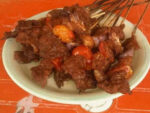





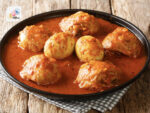









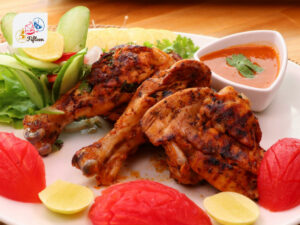
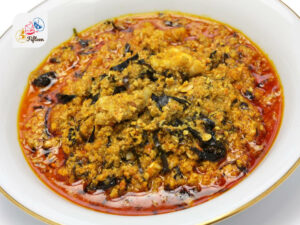






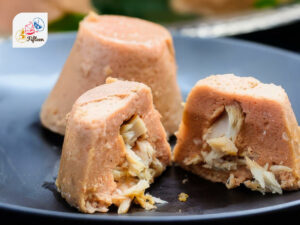


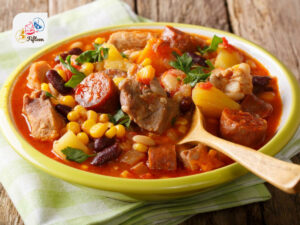
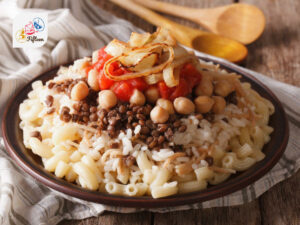







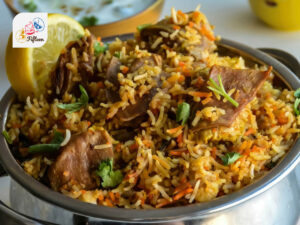









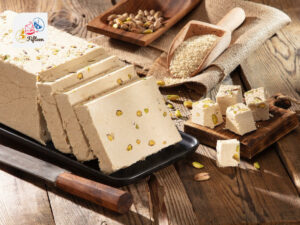






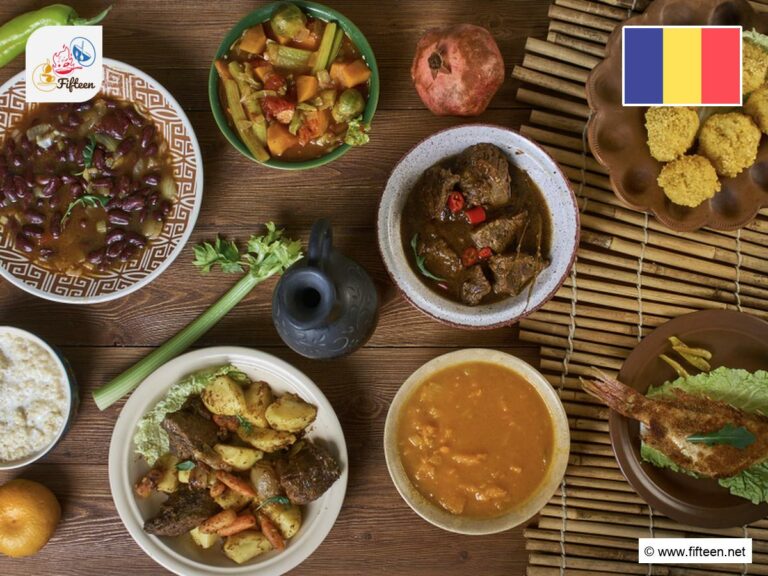


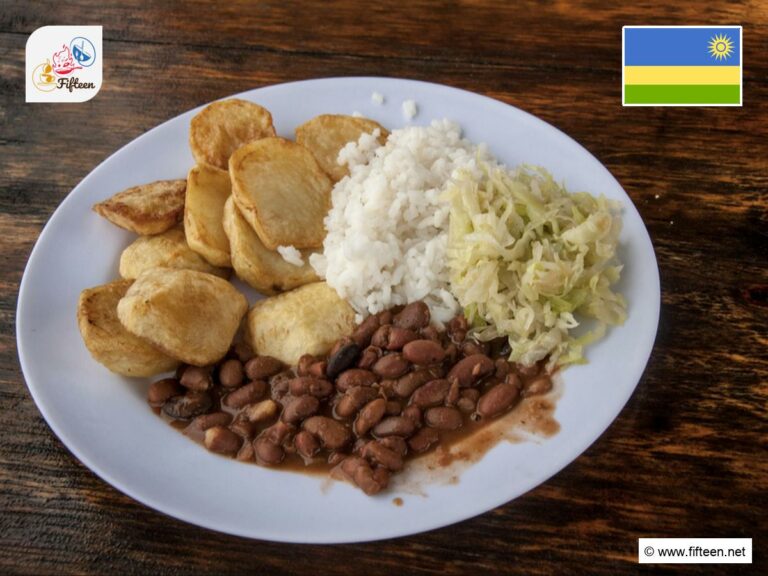

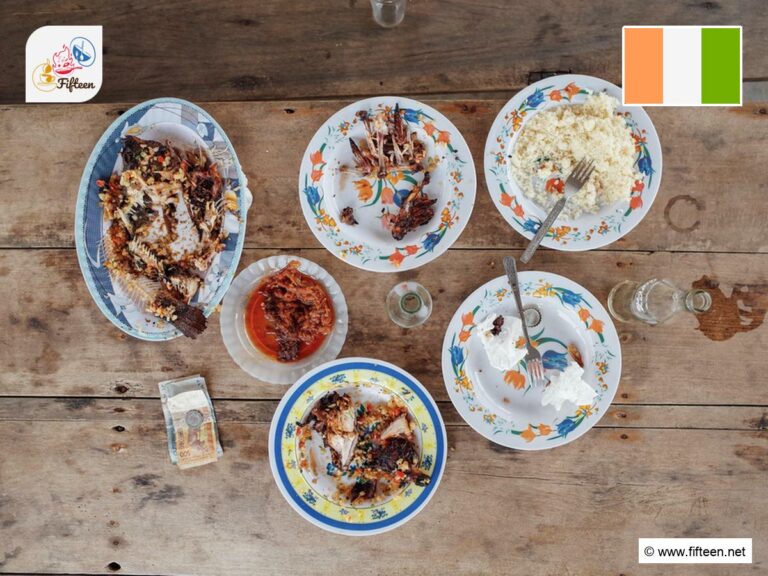



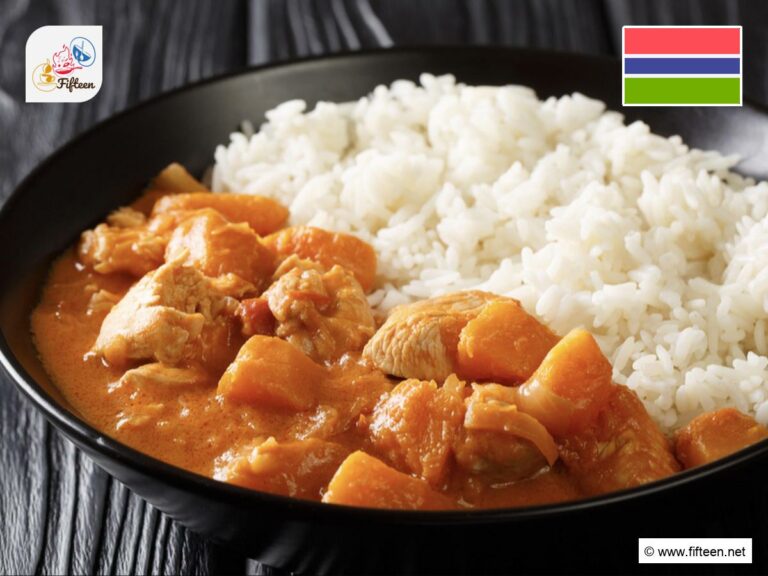


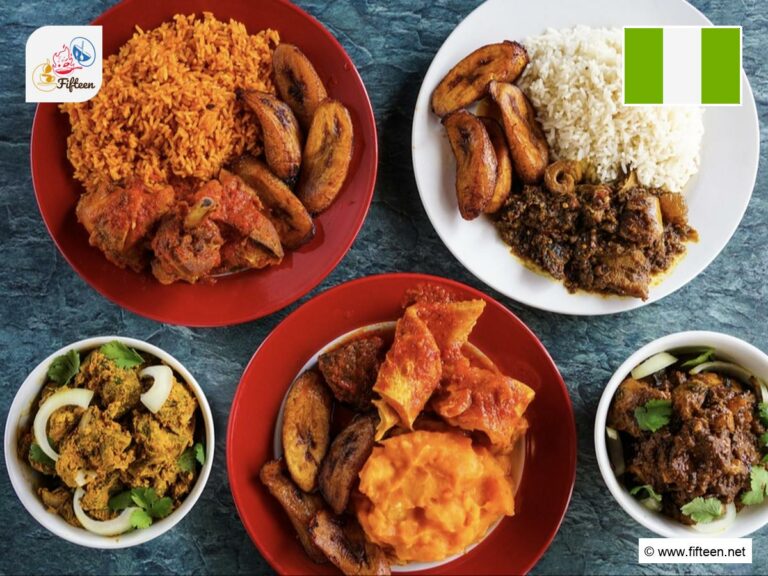
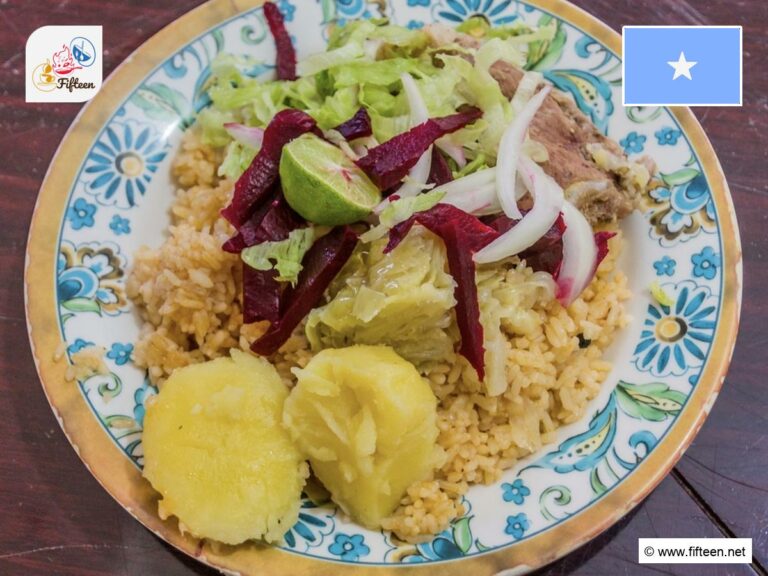


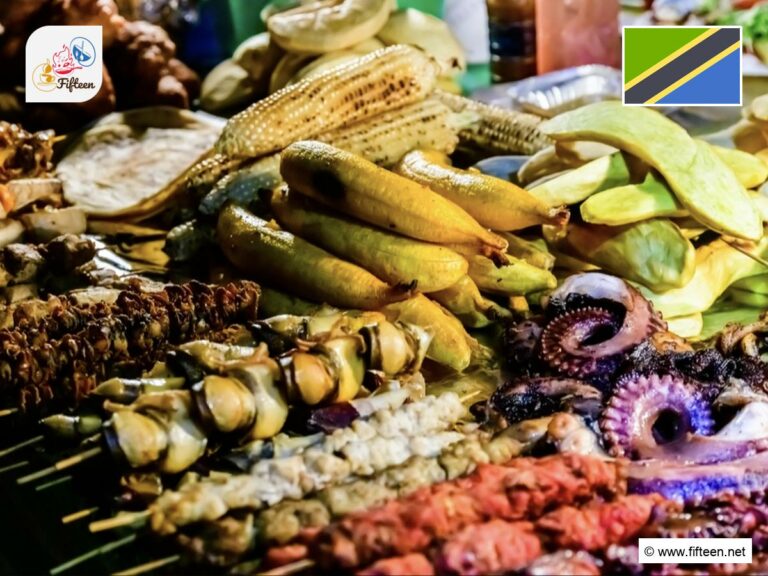






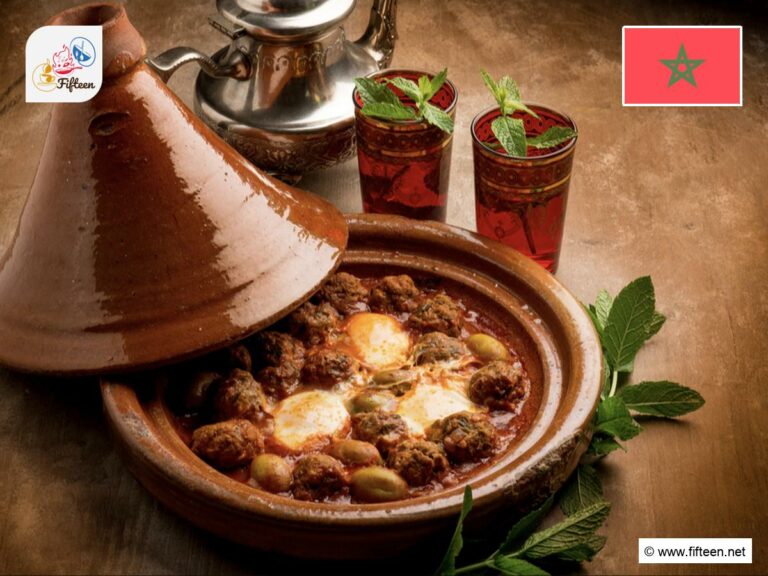





Jamie Scott
Editor in Chief, Senior Content Writer
Expertise
Home Cooking, Meal Planning, Recipe Development, Baking and Pastry, Food Editor, Cooking-video Maker, Western Food Evaluation Expert
Education
Le Cordon Bleu College of Culinary Arts
Local Community College, New York, NY
Jamie Scott is a skilled culinary expert and content creator specializing in Western cuisine. With over 15 years in the culinary field and formal training from Le Cordon Bleu, Paris, Jamie deeply understands how to blend nutrition with delicious flavors. His passion for cooking matches his commitment to making healthy eating accessible and enjoyable.
On Fifteen.net, Jamie brings a fresh perspective to classic dishes and beverages, offering readers insightful recipes, cooking tips, and a fresh view on meal planning that emphasizes taste, health, and simplicity.